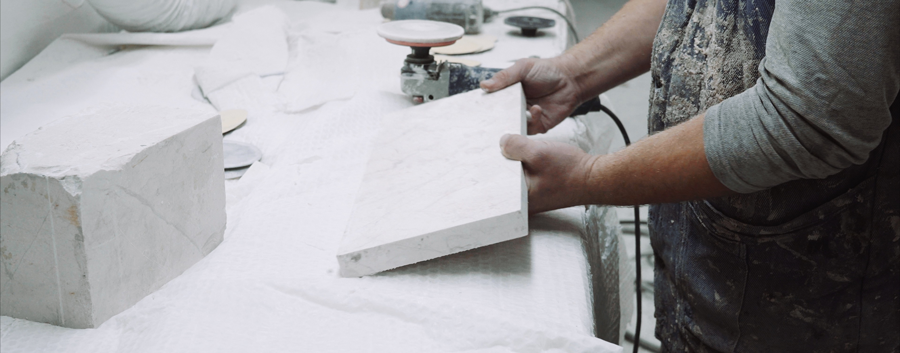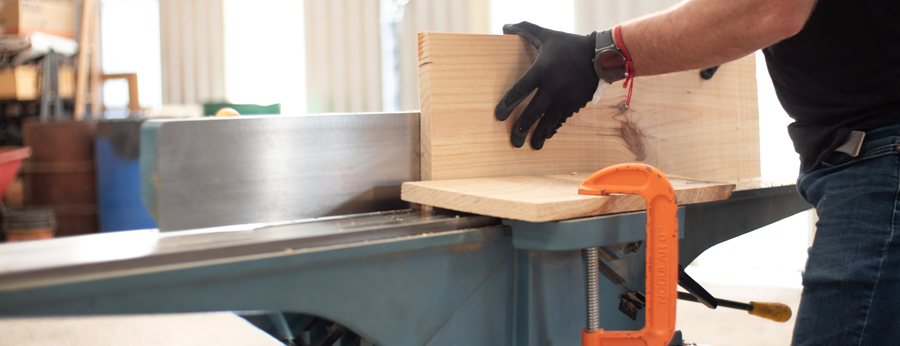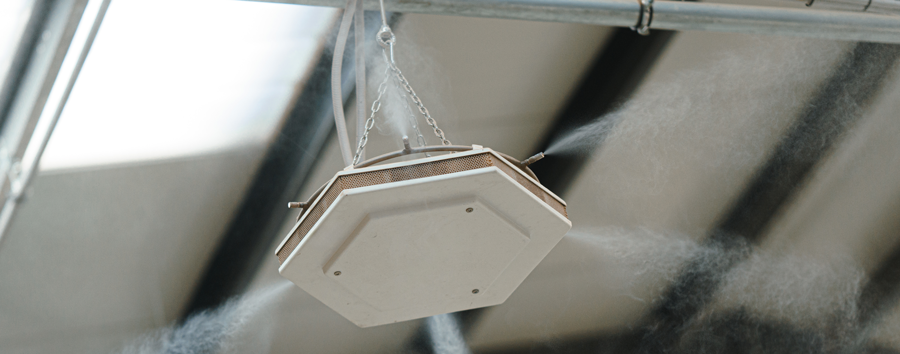The prohibition of engineered stone
The issue
When workers are exposed to respirable crystalline silica (silica dust) they are at risk of developing silicosis. Silicosis is a serious chronic lung disease where exposure to silica dust overtime damages the lungs, makes it difficult to breathe and can lead to other serious health conditions and infections. Engineered stone benchtops are widely used and have a high level of silica (up to 95% crystalline silica) compared to their natural counterparts (5-50% crystalline silica). There is currently no cure for silicosis, which is why legislative changes to help prevent workers’ exposure to silica dust are necessary.

How did we get here?
The use of engineered stone expanded significantly with the increasing popularity of engineered stone benchtops. Engineered stone benchtops first became available in Australia in 2000 or 2001 and along with it, the increased incidence of silica related diseases. A general lack of awareness of the hazards, poor work conditions and a lack of appropriate work practices and personal protective equipment (PPE) has seen a magnification in the number of cases of silicosis and related diseases.
Between 2010-2011 and 2019-20
In Australia between 2010-11 and 2019-20 there were 412 accepted workers’ compensation claims for silicosis, and in 2015 Australia saw its first reported case associated with engineered stone. Since then, there has been a growing outcry from stakeholders and a push to ban or regulate engineered stone. Additionally, a National Dust Diseases Taskforce was established and tasked with developing a national approach to the prevention, detection, management and control of occupational dust diseases in Australia.
May 2023
In May 2023, amendments were made to the Model Work Health and Safety (WHS) Regulations that prohibited the uncontrolled processing of engineered stone products. Following the amendments, the Commonwealth, State and Territory governments met on 13th December 2023 and agreed to completely ban the use, supply and manufacture of engineered stone from the 1st of July 2024.

March 2024
On the 22nd March 2024, another WHS minister’s meeting was held where a number of draft amendments to the model WHS laws were agreed upon, including the type of products that will be prohibited and the products that will be excluded from the ban. It was also agreed that jurisdictions may adopt a transition period for contracts entered into prior to the 31st of December 2023. A review of the prohibition will take place before the 31st of July 2025 to ensure that it is effective and to identify and assess any unintended outcomes. The use and processing of alternative products will also be assessed during this time to ensure that there are no unacceptable risks to workers.
1 July 2024: the ban commences
As mentioned above, transition periods may apply to contracts entered into prior to the announcement of the ban, however, Ministers have encouraged businesses and consumers to consider alternative products and approach any contract negotiations in good faith to reduce the use of engineered stone benchtops, panels and slabs during this time. Victoria will not implement a transition period due to the unacceptable risk to workers. The transitional period for most other jurisdictions will be in place until the 31st of December 2024.

How will the ban affect you and what is changing?
Following the commencement of the ban, businesses and self-employed persons will not be allowed to install, manufacture, process or supply engineered stone benchtops, panels and slabs, or ask a worker to perform such work. Work on engineered stone products installed prior to the ban is allowed if appropriate safety requirements are met.
Working with legacy engineered stone and the processing of other products containing crystalline silica will be required to meet specific control measures in addition to existing WHS/OHS requirements such as, but not limited to, monitoring for airborne contaminants. The tighter control measures include controls such as a water suppression system, an on-tool dust extraction system or local exhaust ventilation system, plus PPE.
A notification framework for permitted work on legacy engineered stone will be adopted following further development by Safe Work Australia.

How can you prepare?
You can prepare by using alternative products, re-negotiating contracts and making sure that control processes are in place for any work on engineered stone products or their alternatives.
You can also use your SafetyLaw monthly updates and HSE Bulletin to keep up to date with any current and future changes to the legal requirements for engineered stone. Compliance Register and Compliance AuditTool can be used to aid in the assessment of your performance and flag high risk obligations.
If you would like to add SafetyLaw, Compliance Register or Compliance AuditTool to your current subscription, contact your Account Manager.
If you don’t have an Environment Essentials subscription but interested to see how our products can help you understand and prepare for the new engineered stone legal requirements, get in touch or sign up for a free trial.
References
- Department of Employment and Workplace Relations Webpage: Prohibition on the Use of Engineered Stone
- Department of Employment and Workplace Relations Webpage: Work Health and Safety Meeting of Ministers, 22 March 2024
- Department of Energy, Mines, Industry Regulation and Safety Webpage: Silica
- Health Direct Webpage: Silicosis
- NSW Government Media Release: NSW will ban Engineered Stone from 1 July 2024 to Protect Workers’ Health
- Parliament of Australia Webpage: ‘Senate Official Hansard’, Thursday, 14 September 2023, Forty-Seventh Parliament, First Session Fourth Period
- Premier of Victoria Webpage: Ban on Deadly Engineered Stone to Keep Workers Safe
- Queensland Government Media Statement: Queensland’s Engineered Stone Campaign Culminates in National Ban
- Safe Work Australia Webpage: Crystalline Silica and Silicosis
- Safe Work Australia Publication: Decision Regulation Impact Statement: Prohibition on the Use of Engineered Stone
- Safe Work Australia Webpage: Engineered Stone Ban
- Safe Work Australia Media Release: Engineered Stone Prohibition to Make Workplaces Safer and Healthier for all Australians
- Safe Work Australia Publication: Explanatory Statement: Model Work Health and Safety Regulations (Engineered Stone) Amendment 2023
- Safework NSW Webpage: Engineered Stone Prohibition to Commence 1 July 2024
- SafeWork SA Webpage: Engineered Stone Prohibition
- WA Government Media Statement: Engineered Stone Banned and National Labour Hire Scheme Endorsed
- WA Government Media Statement: Further Decisions Made on Engineered Stone Ban
- WorkSafe QLD Webpage: Engineered Stone Ban in Effect from 1 July 2024
- WorkSafe TAS Webpage: Preventing Exposure to Silica from Engineered Stone Benchtops
- WorkSafe VIC Webpage: Crystalline Silica
- WorkSafe VIC Webpage: Frequently Asked Questions – Engineered Stone Ban